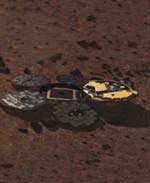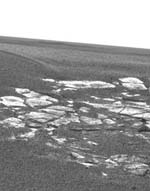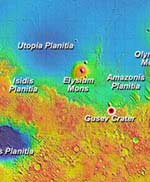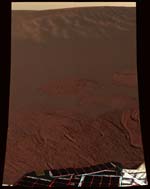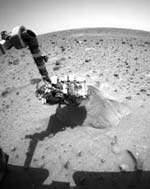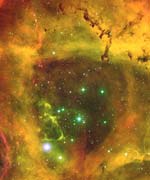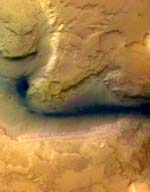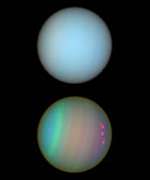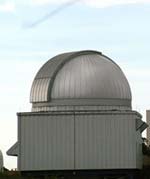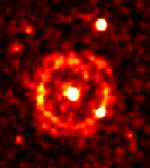
Image credit: PPARC
The discovery of a unique phenomenon: a beautiful set of expanding X-ray halos surrounding a gamma-ray burst which have never been seen before, (see Movie link at end), has been announced by an international team of astronomers led by Dr Simon Vaughan of the University of Leicester. The research has been accepted for publication in the Astrophysical Journal.
Gamma-ray bursts (GRB) are the most energetic form of radiation in the Universe and can be used to probe any material between Earth and the burst. In this case, the GRB lies behind the plane of our Galaxy, so its light has to travel through the gas and dust in the Galactic disc to reach us.
ESA’s gamma ray observatory satellite ‘Integral’ detected the 30 second long GRB 031203 on December 3rd 2003 and the halos were discovered in a follow-up observation that started 6 hours after the burst with ESA’s ‘XMM-Newton’ X-ray space telescope.
Commenting on the discovery, Professor Ian Halliday, Chief Executive of the UKs Particle Physics and Astronomy Research Council (PPARC) said Gamma-ray bursts are the most violent events in the Universe. Unlike the serene beauty of the stars that we can see with our eyes, the Gamma Ray Universe is a place of dramatic explosions, cosmic collisions and matter being sucked into black holes.
Halliday added This is a wonderful example of two of ESAs most advanced observatories in which UK scientists have made a significant contribution, working in harmony to reveal a new level of scientific understanding.
The fading X-ray emission from the GRB – the afterglow – is clearly seen in the image from the X-ray cameras on XMM-Newton. Uniquely, two rings centred on the afterglow were also seen. Dr Vaughan said “These rings are due to dust in our own Galaxy which is illuminated by the X-rays from the gamma-ray burst. The dust scatters some of the X-rays causing the rings, in the same way as fog scatters the light from a car’s headlights.” He added “Its like a shout in a cathedral; the shout of the gamma-ray burst is louder, but the Galactic reverberation, seen as the rings, is more beautiful.”
Due to the finite speed of light, X-rays from more distant dust reach us later, giving rise to the appearance of expanding rings. Dr Vaughan said “We expect to see an expanding ring on the sky if the dust is in a sheet roughly in the plane of the sky, but as we see two rings there must be two dust sheets between us and the GRB. Understanding how dust is distributed in our Galaxy is important. Dust helps cool gas clouds which can then collapse to form stars and planets. Knowing where dust is located helps astronomers determine where star and planet formation is likely to occur.”
Expanding X-ray dust scattering rings have never been seen before. Slower moving rings seen in visible light around a very few supernovae are caused by a similar effect.
The two halos are due to thin sheets of dust at 2,900 and 4,500 light-years away; the astronomers accurately measured the distances from the expansion rate of the halos. The distances have an uncertainty of just 2%, a remarkable level of accuracy for an object in our Galaxy. The nearest dust sheet is probably part of the Gum nebula, a bubble of hot gas resulting from many supernova explosions. The GRB itself is thought to have occurred in a small galaxy about a billion light-years away (one of the closest GRB galaxies).
Astronomers are still trying to understand the mysterious gamma-ray bursts. Some occur with the supernova explosion of a massive star when it has used up all of its fuel, although only stars which have lost their outer layers and which collapse to make a black hole seem able to make a GRB.
Today Integral and XMM-Newton provide astronomers with their most powerful facilities for studying gamma-ray bursts, but 2004 will see the launch of “Swift”, a new NASA mission with major UK involvement, which will be dedicated to GRBs. This will work in concert with the two ESA satellite observatories, providing more opportunities for discoveries in this cutting edge field. UK participation in Integral, XMM-Newton and Swift is funded by the Particle Physics and Astronomy Research Council.
Original Source: PPARC

